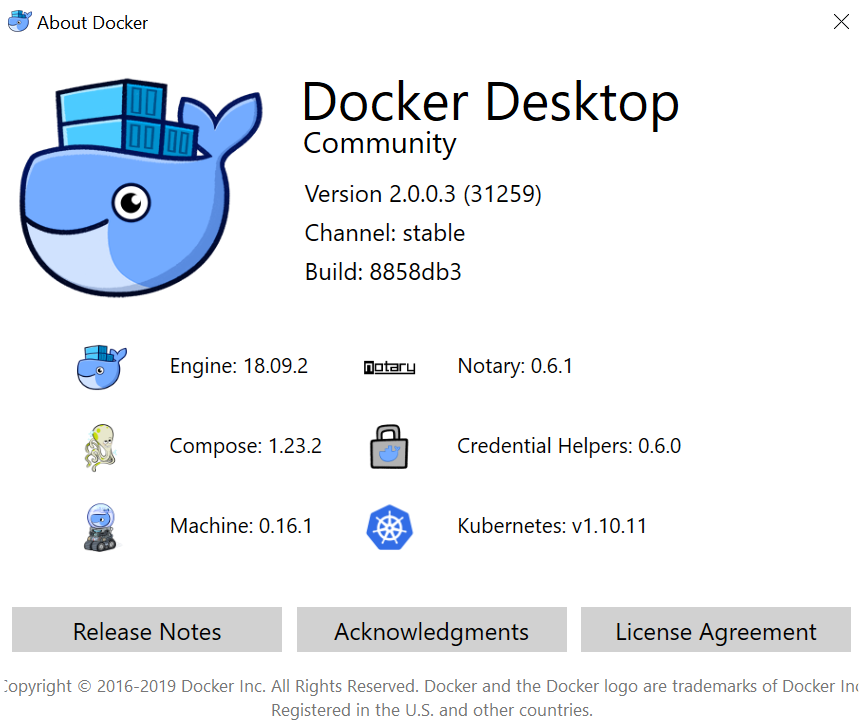

- #DOCKER FOR WINDOWS KUBERNETES DASHBOARD INSTALL#
- #DOCKER FOR WINDOWS KUBERNETES DASHBOARD MANUAL#
- #DOCKER FOR WINDOWS KUBERNETES DASHBOARD WINDOWS 10#
GitCommit: ff819c7e9184c13b7c2607fe6c30ae19403a7affĬlient Version: version.Info'` do kubectl explain $kind done | grep -e "KIND:" -e "VERSION:"Īlso, the information can be gathered in a less efficient way from the kubernetes API docs (with links for each version) found here – We can now switch to terminal in our distro and run following commands: $ docker version
#DOCKER FOR WINDOWS KUBERNETES DASHBOARD INSTALL#
# Update the system based on the packages installed > the "-y" will approve the change automaticallyįor full instructions, install Docker Desktop with WSL2 backend here. For Ubuntu, run below: # Update the repositories and list of the packages available # Change the %sudo group to be password-lessĪlso, lets update the package repos and distribution for distro. Let’s also go ahead and enable nopassword login for the group %sudo: # Edit the sudoers with the visudo command For first time, it will ask you to setup username and password like any other place.
#DOCKER FOR WINDOWS KUBERNETES DASHBOARD MANUAL#
If you don’t want to use the Windows Store, then follow the steps in the WSL docs for manual install. For the purpose of this blog post, we’ll use Ubuntu 20.04 LTS. You can now install Linux Distro of your choice by going to Windows Store from start panel and then install the same.
#DOCKER FOR WINDOWS KUBERNETES DASHBOARD WINDOWS 10#

Docker Desktop for Windows, stable channel.OS: Windows 10 version 2004, Build 19041 or higher.Here is the list of the prerequisites needed and their version/lane: KinD was primarily designed for testing Kubernetes itself, but may be used for local development or CI. KinD is a tool which can be used for running local Kubernetes clusters using Docker container nodes. But to gain Kubernetes experience, most need to run multi node solutions or clusters. Minikube is one of solutions that can be used to solve this scenario but minikube is limited to single node setup. However it soon becomes additional hassle for devs and ops alike and also keeps contributing to company’s rising cost. Some other go to the extent of provisioning one kubernetes cluster per developer. Many organizations come around this by provisioning separate kubernetes clusters for devs. However there remain difficulties in setup and running multi node clusters for developers to test their container workloads. Kubernetes has raced ahead of other container management platforms in last few years.


 0 kommentar(er)
0 kommentar(er)
